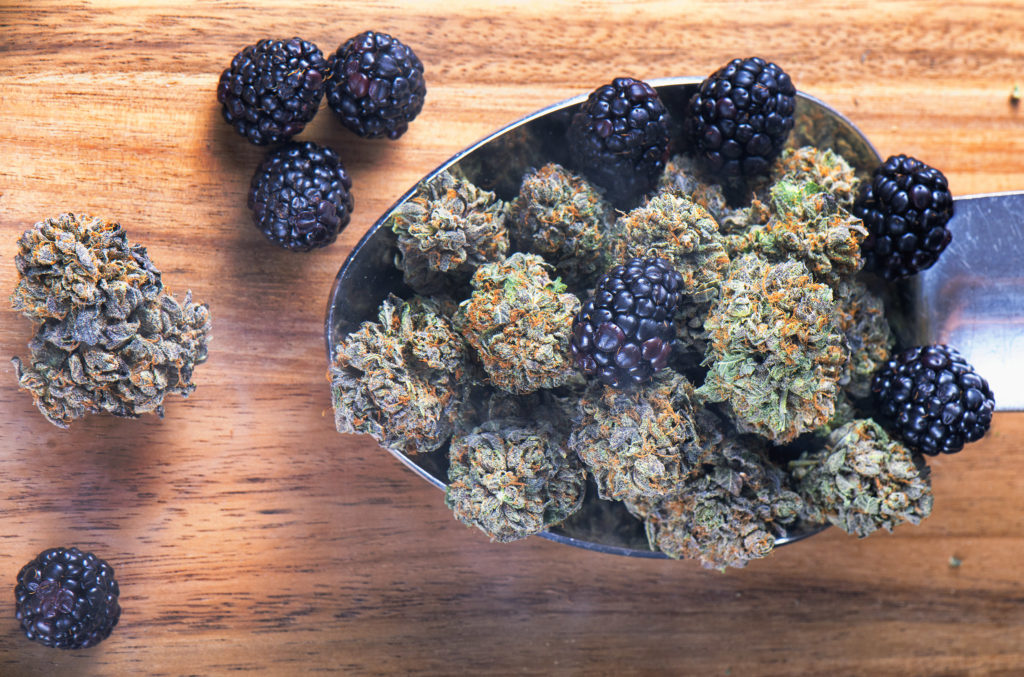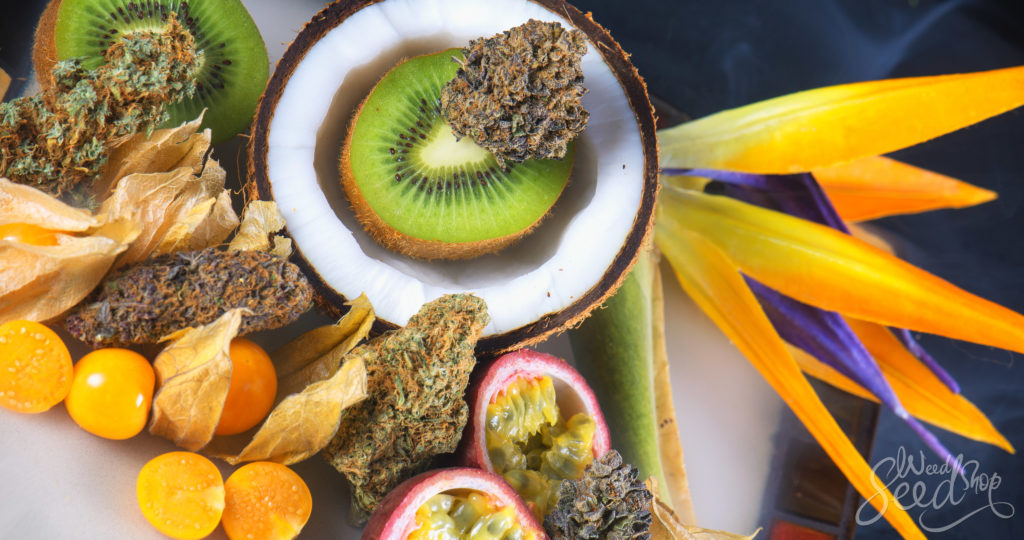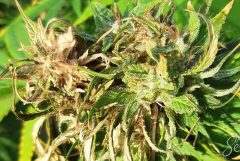Although little is generally known about terpenes, these compounds are present in cannabis in huge numbers. They work synergistically in complex ways with cannabinoids and other solvents in cannabis to give the user the effects they experience. This article tells you all about the role of terpenes in cannabis and how you can use them for your benefit.
Although humans have been scientifically exploring the potential of terpenes for healing, we have only recently begun delving into their role within the world of cannabis. Terpenes may be responsible for many of the medicinal benefits experienced by cannabis users. In fact, terpenes from many other plants are used regularly for their therapeutic value.
Solvents and cannabinoids are important constituents of cannabis, but the role of terpenes is just as significant, although our knowledge about them is still growing. Understanding their job in the cannabis plant gives you a more holistic appreciation for the medical components of this magical plant.
Terpenes are responsible for aromas
A terpene is essentially a hydrocarbon that is found in the essential oil of plants. It has at least 10 carbon molecules and 16 hydrogen molecules. Terpenes are not unique to cannabis, and are a component of many other plants. They are what offer the aromatic quality to herbs and flowers. So as you can imagine, your herb garden is full of plants that are rich in terpenes. These compounds also contribute to the flavour and colour of the plant that they inhabit. Plants with a strong aromatic profile are considered to be full of terpene.
It is terpenes that are used in aromatherapy for the benefits they bring to the body and the emotional well being of a person. A popular example is of the lavender flower which contains huge amounts of the terpene, linalool. This compound is what is responsible for the relaxing effect that the aromatherapy of lavender produces. The terpenes present in cannabis work in almost the exact same way, each giving its own unique contribution to the effect.
Cannabis – famous for its aromas

One of the things cannabis enthusiasts love the most about their magical herb is the smell and flavour of it. It is something that is considered to be completely unique to cannabis, with a weed lover being able to smell it from miles away. It is no surprise that users develop an affinity with the characteristics of smell and taste in particular, because the cannabis plant contains over 200 terpenes. This means that taste and flavour are generally never lacking from a well grown cannabis tree.
It is popular for strains of weed to be named after the aromas that they carry. It is from the help of terpenes that Blueberry Kush has it’s berry flavour and that Cheese smells like… well, cheese. The same is true for other WeedSeedShop favourites, such as Bubblelicious (and it’s deliciously sweet aroma) and Papaya. Although certain strains will contain varying levels of certain terpenes, each plant is rich with many of these compounds, working synergistically with cannabinoids and solvents to give you the feeling you love so very much.
Terpenes work in the same way as cannabinoids
If you are at all familiar with how cannabinoids interact with the human endocannabinoid system, then you can consider yourself educated in the way of terpenes. The same way that cannabinoids bind to cannabinoid receptors in the brain, so too do terpenes. By binding with certain receptors in the brain, they encourage a specific effect in the user, one that is characteristic to that particular terpene.
It is likely that the terpene plays a bigger role than we originally anticipated. So much attention has been focused onto cannabinoids that most people assume they do most of the work.
However, from our knowledge of terpenes and their value, it is possible that they play a huge role in the medicinal value of cannabis altogether. These compounds bring anti-inflammatory properties, natural bronchodilators, and possibly even anti-carcinogen properties. Furthermore, they are non-psychoactive, making them a great way to seek the medicine of cannabis.
Terpenes and hemp oil
The aromatic strength of cannabis is one of the definable characteristics that makes it different from hemp. The smell and taste of hemp is not considered to be as strong as that of weed, but this doesn’t mean that it does not contain terpenes. The hemp plant is the home of 120 different terpene compounds that have anti-viral, anti-inflammatory and anti-bacterial features.
In the matter of hemp seed oil, the terpenes do not always make it into the final product. We are well aware of how to extract certain cannabinoids from weed, but isolating terpenes is still new territory. Depending on the way that the hemp seed oil is created, the terpenes may or may not make it into the bottle. The hemp seeds also have a much softer aroma than the rest of the plant, meaning that their concentration of terpenes is also much lower.
Different terpenes and their effects

If you are familiar with terpenes and their effects, then you can select strains based on their terpene make up. This means you have more freedom to personalize the effects of your cannabis experience.
Alpha pinene: This is one of the most common terpenes present in strains of cannabis, and it is also a common compound in other plants. This is the terpene that is responsible for giving the aroma to herbs such sage and rosemary. It has been used as a topical antiseptic and even as a way to balance the mental energy in a person to help one focus better. Pinene is found in high levels in the Trainwreck strain.
Limonene: As the name suggests, this aroma has a citrusy smell. This terpene is present in citrus fruits, in peppermint and juniper and it is extremely common to find this compound in cannabis. Limonene has anti-bacterial, anti-fungal and anti-depressant effects on those who come into contact with it. It is also well known to increase blood pressure. You can find high levels of this terpene in OG Kush.
Myrcene: This terpene is present in menthol and lemongrass, and is often used in the cosmetic industry for its fragrance. In cannabis, it is present in huge volumes and as with the other terpenes, it has many healing benefits. As well as being an anti-septic, anti-microbial, anti-carcinogen and anti-depressant, this terpene also plays another special role in the cannabis plant. It increases cell-membrane permeability, meaning it allows more THC to enter the blood stream. For higher levels of myrcene, try White Widow and Skunk #1.
BCP (beta-caryophyllene): BCP was recently discovered to be an active component of cannabis. It is said to bind to the CB2 receptor, encouraging anti-inflammatory effects. This is the first FDA approved dietary supplement of cannabis because it is completely non-psychoactive. It is an effective food supplement and likely to be one of the most prevalent medical characteristics of cannabis.
Borneol: Borneol is a compound that carries the fragrance of camphor. It is considered to be an analgesic as well as being able to fight off insomnia.
Eucalyptol: This terpene obviously has its roots with the smell of Eucalyptus! And yes, it can be found in weed, too. Eucalyptol is usually used as a decongestant and as a way to suppress coughs. It is not typically present in huge amounts in strains of cannabis, but it is definitely a terpene worth knowing about.











